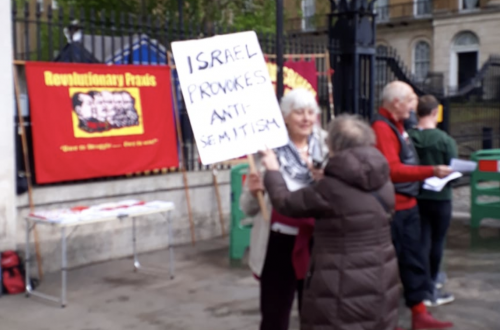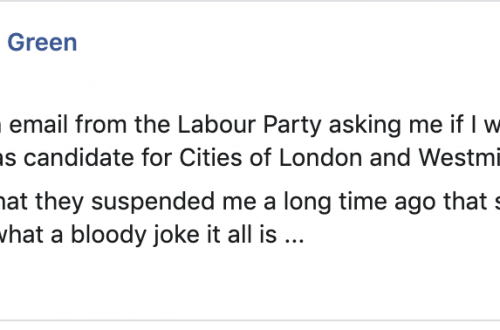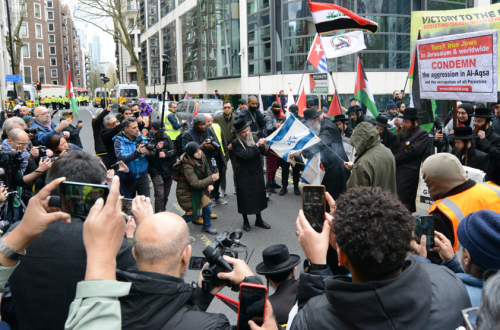This is a cross-post from Just Journalism.
On 16 August 2010 BBC Panorama broadcast ‘Death in the Med’, a carefully detailed investigation into Israel’s raid of the Mavi Marmara, the only ship of the Free Gaza flotilla that became the site of a deadly confrontation between passengers and naval commandos. Presented by Jane Corbin, the half-hour programme included a raft of new video and radio footage of the event, taken from both the Israeli Navy and from confiscated passenger tapes, most of which were recorded by members of a website called CulturesOfResistance.org. This new footage enabled Corbin to piece together the most comprehensive sequence of events of the night of May 31. (See below for both a full transcript of the programme and the broadcast itself.)
During the programme, Corbin expanded on three key points:
1. That the IDF had faced a violent assault from activists;
2. That the attack had been pre-meditated by a ‘hardcore’ group of activists;
3. That this core was organised by the Turkish Islamist charity, the Foundation for Human Rights and Freedoms and Humanitarian Relief (IHH).
Just Journalism Executive Director Michael Weiss issued a statement this morning:
‘I can scarcely think of a better piece of journalism on the flotilla raid than Jane Corbin’s in-depth investigation, which drew from eyewitness testimony from both passengers and commandos aboard the Mavi Marmara. Notable in this report was an unwillingness to gloss over crucial video footage showing the upper deck of the ship laying siege to abseiling Israeli forces, or to take the word of IHH officials at face value. The only thing missing, really, was IHH’s well-publicised role as both a fundraiser and ideological helpmeet of Hamas.’
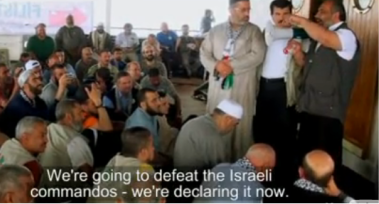
Unarmed activists?
Panorama exhibited footage taken from the Mavi Marmara showing IHH head Bulent Yildirim saying the following:
‘We’re going to defeat the Israeli commandos –we’re declaring it now. If you bring your soldiers here, we will throw you off the ship and you’ll be humiliated in front of the whole world.’
Corbin then asks Yildirim: ‘You said that if they board the ship you would throw them into the sea. Isn’t that a provocation, saying that to your supporters on the ship?’
Yildirim’s response: ‘I spoke correctly there. I spoke beautifully. I watched it again afterwards. Israel stole these images from us, but we’re not denying it. If we organised another boat, and Israel attempted invaded, we’d use our right to passive resistance. We’d throw them into the sea.’ (Emphasis added.)
Activists v. volunteers
A crucial distinction was also made between the 40 or so ‘hardcore’ IHH combatants (in the programme, ‘activists’) who took control of the ship and awaited the Israeli commandos on the upper deck versus the rest of the passengers (‘volunteers’), who remained below deck and numbered well over 500. IHH ‘volunteers’, but no ‘activists’, were interviewed by Panorama.
Panorama exhibited footage from ship security cameras showing that this hardcore activist contingent was equipped bars and wooden staves and gas masks.
‘Martyrdom’:
Panorama also confirmed that prior to the raid at least one passenger aboard the Mavi Marmara expressed a willingness to die as a shahid [martyr]. He’s quoted as saying: ‘If the Israelis dare and try to fight us, we’re going to give them a really good fight. But if I die as a shahid, I just want to tell my children, my wife I love them a lot, their father died for a really good cause’.
Paintball guns and stun grenades:
Corbin also substantiates via footage and narration an early Israeli claim that the commandos tried to raid the boat from a dingy and began by using non-lethal stun grenades and paintball guns after the IHH activists threw bottles and rocks at the dingy.
Corbin states that when the commandos next tried to take the ship by abseiling down from a helicopter, they were similarly armed with paintball guns and stun grenades but were also carrying their sidearms. She cites an IDF claim that it is impossible to fire live rounds whilst abseiling despite the Mavi Marmara passengers’ contention that they were shot at with bullets first, and only then laid siege to the commandos.
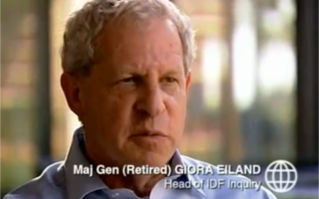
Commandos stabbed and shot:
Ample play is given to the commandos’ recapitulation of events:
Captain R: They came at me with knives, and tried to stab me. I kept getting hit on my head, on my whole body. They caught me by the arms and legs to throw me to the deck below [all over footage] I fought back wildly and caught hold of the side. They beat my hands with clubs and I fell.
Corbin: Captain R was one of two Israelis who were cornered and stabbed.
Captain R [over photo of soldier on ground, side covered in blood, next to man holding knife]: I felt a strong stab in my stomach. I looked down at my abdomen and saw it was a knive. The beating was continuous, and the cries of ‘Allah Akbar’
Confiscated Israeli sidearm:
Another key point made by Panorama is that at least one Mavi Marmara passenger admits to confiscating a commando’s sidearm. He was Ken O’Keefe, an IHH ‘volunteer’, who is quoted as saying:
‘The moment [the commando] fell to the ground, myself and another brother descended on him and the first thing I did was to go for his 9mm pistol, knowing that if he got to it first we might be the ones to end up dead. So to me this was an act of attempting to save life as once I took possession of the weapon was not going to use it. In fact, I emptied the bullets.’
Yet O’Keefe’s testimony runs counter to a previously unaired radio transmission between the onboard commandos and their naval base:
‘Do they have real weapons?’
‘Yes, real weapons, they are firing on us.
There is live fire here! (panicked)’
Corbin cites retired Maj-Gen Giora Eiland, the man who led the IDF investigation into the raid: ‘There is clear evidence that other side used live fire on four occasions, some were Israeli weapons stolen from soldiers, but at least in one case they used their own weapon, as we found shells and cases not in use in the IDF.’
IHH’s humanitarian aid claim:
At the end of the programme, Corbin travels to the Gaza warehouse where most of the goods off-loaded from the Free Gaza flotilla are being kept. Although she does not specifically say whether the goods she inspects came from the Mavi Marmara or from any of the other vessels that sailed with the flotilla, she notes the presence of mobility scooters, hospital beds and drugs but ‘found that two thirds of the medicines are out of date and useless.’
Since June 7, the Israeli Foreign Ministry has maintained that ‘the Mavi Marmara (passenger ship) did not carry any humanitarian aid’.To read all of Just Journalism’s coverage of the flotilla incident, click here.
Michael Weiss has written three separate pieces on IHH and its Hamas ties. One in the New York Daily News, one in Standpoint, and one in The Weekly Standard.
Just Journalism has transcribed the entirety of BBC Panorama’s ‘Death in the Med.’ To read it, click here.
The documentary can be viewed on Youtube (links here)
